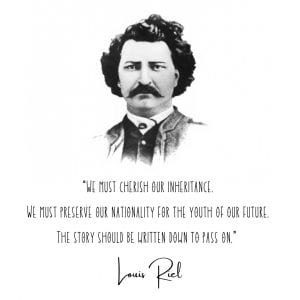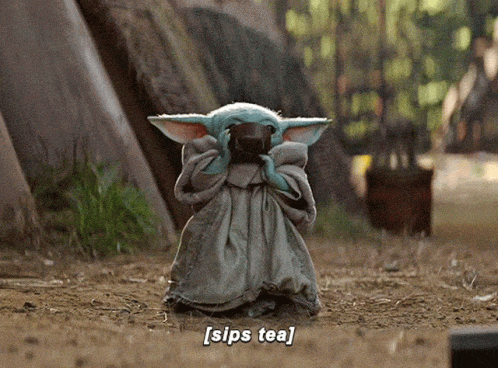
While I was writing this blog post, I was listening to Spotify. However, I stopped writing for a second and was hit by a sudden realization. I actually paid attention to the lyrics for once, but then horror struck.
“I… don’t want a lot for Christmas…”
Oh no, am I still listening to holiday songs in March?!?!
Y e s.

Hello there! Welcome to another blog post. Before I run off to spring break, I’m going to reflect on our latest Humanities project; Case for a Nation!


This assignment was a continuation of a project from last year; the more things change.

However, this time, we were able to go past the Fur Trade. We started learning about the events afterwards, such as the creation of Canada itself. Although this project wasn’t very long (at least it didn’t seem long), we still had many opportunities to learn new things.
A main aspect of this project, as with most historical events, was to understand the actions of the past. Although there are many mistakes in our past, it is our responsibility to acknowledge them and learn not to repeat.
We also learned how the power of nationalism affects history and current events (like the Ukraine/Russia situation and the trucker convoy).

For the final product, we set out to create an instagram post about a specific historical event. We also had to explain how nationalism ties into it. We had the choice to research topics between the 1750’s and pre-WWI. Despite this, many of the examples were from Canada.
Surprisingly, I knew very little about this era of Canadian history. It was fun to research something new!

We started this project off by making a quick video, which introduced us to the concept of nationalism. As with most things, we completed this entry event as a group. My teammates were Zach and Sylas (go check out their blogs!)
We embraced our inner “stereotypical Canadian” and created a short “Tik Tok”. We were able to identify and portray classic stereotypes like maple syrup, politeness, and free health care (wow that’s a variety lol.)
Here’s some more examples:

I found it surprising that I’ve never even heard of some of these stereotypes, nor would have associated them with my country. Looking back, it’s interesting to think about how these things came in association with Canada. Some are plain obvious like “the Rockies” and “Vancouver”. However, I had no idea we were known for curling!
Anyways, you can watch our “Canadian Check” video here!
Ah yes, Canadians hug trees and talk about their “free health care” all the time. It’s tradition, eh!

Ok. Moving on.
Anyways, now that we had a basic understanding of “nationalism”, it was time to extend further and connect it to current events. We began to choose our topics and prepared to facilitate a group conversation. Each class, 11 students would present their topics in different small groups. Although there were many dates to choose, we had to blindly pick them out of a bowl.
Lucky me; I got to do it on the first day. Just my typical luck…

Despite having to go first, it was a blessing in disguise. Looking back, it turned out to be great in the long run, because the Loon Lake trip killed my motivation (IT WAS FUN BUT VERY TIRING!)
Anyways, I decided to learn more about the Trucker Convoy, which was headlines at the time. Digging deeper into this situation, I found it interesting to see how this event folded out. A protest for freedom turns into a full out occupation with some radical ideals (such as overthrowing the government.)
It almost reminded me of the anatomy of a revolution, which we learned last semester. Although it did not escalate to levels as extreme as the Xinhai or American revolutions, it was still strange to see such similarities in a current Canadian event.

I really enjoyed having a conversation with my peers. I was able to learn more about many different Current Events and contribute in a group discussion. What I loved most about this assignment was that we were encouraged to expand and share ideas. It also allowed me to become a more compelling communicator by participating in discussions, which pushed me out of my comfort zone.
It wasn’t just a presentation… it was a collaborative activity.

You can check out the outline for my discussion here:
With our understanding of nationalism, we were able to move forward. We began to learn more about the conditions for the creation of the Canadian confederation and John A. MacDonald. I found this process very interesting, but there was one activity in particular that extended my understanding.
We experienced another simulation. Although this one wasn’t as wild as Nation X, I really enjoyed pretending to negotiate in a political manner.

We were assigned a Canadian colony (upper/lower Canada, Nova Scotia, etc) and were tasked to decide the terms and conditions in which we’d join the new Confederation. I was partnered with Sabrina and Cooper, and we were representatives for the colony of Prince Edward Island.
Luckily, we were given an article on the colony, because I knew nothing about PEI.

Through this activity, we learned how to vocally negotiate our needs and understand the motives of the past. In the end, we decided to join the Confederation, and were granted many of our terms. This was my favourite part of this project overall.
If you want to read more on this experience, check out my reflection here:

Finally, we began work on the final product: the instagram post. Before we opened up canva, we had to pick a topic first. Originally I wanted to do my project on the Canadian Railway. I once read a really good (fictional) book about it in Grade 6, and I’d love the opportunity to learn more about it.
However, I was assigned my second choice; the Métis Bill of Rights. Despite it not being my original choice, it turned out to be a really cool topic anyway! Yet again, my bad luck turns out to be better in the long run.

I originally heard about the Métis in French class awhile back, and I really wanted to learn more about them. I seemed to relate to them, if that makes sense. As someone who is mixed as well (my mom is Filipino and my Dad is of Scottish descent), I found it cool that there’s a community of people with a similar ancestry. It’s nice to know there’s others like me.
Uh oh, my teenage identity crisis is showing.

Anyways, we started with research. I found a couple articles about the history of the Métis Bill of Rights, and how it tied in with the Red River Rebellion. It seemed that I got to research my third topic as well. After getting an understanding of the topic, we had to create a draft of the caption for instagram.
I felt like I could have found more sources and articles to read. I love the research portion of projects, and I like reading about history. If I were to do this project again, I would have spent more time collecting more sources and gaining a more “in depth” understanding of the topic. However, I had to move on with what I had.
I’m happy with the caption I wrote. I could have made the connection to nationalism more clearer, but I’m proud that I was able to make it concise to the word limit.
Here’s my individual caption:

With our first draft of the caption complete and an understanding of our topic, we were ready to meet our “groups.” Despite this being an “individual project”, we still had to collaborate with others. My group consisted of Alfie, Ben, and I.
Since we all wrote one, we decided to mesh ours together.

HOWEVER, instagram is a VISUAL platform… meaning we still had to create images to go with our topic! It was time to put my “totally amazing graphic design skills” to the test. We each created 3 visuals; a drawing on a photograph, a quote, and one of our choice.
My favourite image was the choice one. I decided to make an animated gif of the Métis flag, which is a symbol of nationalism. As I was colouring it, I soon discovered that there are two acceptable colours for the flag; red and blue.

Before I knew it, I was researching into it. Although, there is only speculation on how and why this flag was created, I found the history really interesting. Apparently, one theory is that the flag was a gift from both the HBC company and the Northwest company, each giving one of their colour. Another idea was that the flag’s infinity sign represents the unity and bridge between culture, which I think is beautiful.
Anyways, I animated it turning red/blue in the wind, and I thought it was pretty cool. I’m really proud of it.

I could stare at it for hours. It’s mesmerizing.
I also created the other two images, but they’re not as cool in my opinion. I’m happy with the aesthetic of the quote one. Although it isn’t as special as the flag, I still think it’s pretty neat.

I had no idea what to do for the “drawn on image” one, so I tried to represent the agreement between the Canadian government and the Métis. I feel like I could have done better with this one to match up with my other images. Alas, not all of them will be winners.

Anyways, I ended up using my quote image, because we needed one. I’m kinda disappointed that I didn’t get to use the gif, and I still think it’s my favourite image. At least I got to show it in my blog post!

BUT WAIT! We still had to write an opinion paragraph on our topic. At first, I had no idea what to write. I didn’t exactly have a formulated opinion up until then. As the kind of person who likes to know everything before forming an opinion, I still felt bad about writing mine.
I had to support an opinion through text and take historical perspective to understand the motives behind decisions. It was no easy feat, but I feel I was able to accomplish this. Even though, it might not be at the level I wanted to reach for, I was able to learn more from “failure” than I would have from success. 
In the end, I’m glad I completed it in time. At least it’s better done than unfinished. Looking back, I feel like I still could have included more evidence into my argument and connected it to nationalism better. However, I knew I tried my best, and it won’t always be perfect.
Oh no, Encanto has been growing on me.

We also did a mini presentation about our topic to a peer group. We got to tell the story of the Métis Bill of Rights through the story spine! I liked this activity and I enjoyed explaining our topic.
Here’s our slide show:
AND FINALLY! OUR FINAL INSTAGRAM POST!
View this post on Instagram


“How can an understanding of nationalism of the past, help us make sense of today?”
Well, I’d say that when we understand how nationalism was used in the past (both positive and negative aspects), we can learn to recognize it in present events. I didn’t realize how much nationalism affects us in our daily lives, and being aware was alarming. For example, with the Ukraine/Russia situation, I’ve discovered that nationalism plays a key part in that situation.
When we see these things in our own lives, we can prevent it from causing negative harm as it did in the past. The moment we understand it, only then can we fix our mistakes and grow past them. By recognizing it in our past, we discover how it affects us in the present.

In conclusion, this project was a great learning experience. It’s helped me to be aware of things I didn’t see before.
Thank you so much for reading! I swear, I didn’t mean for it to be this long! Stay tuned for more learning!










Leave a Reply